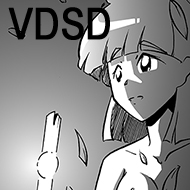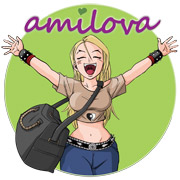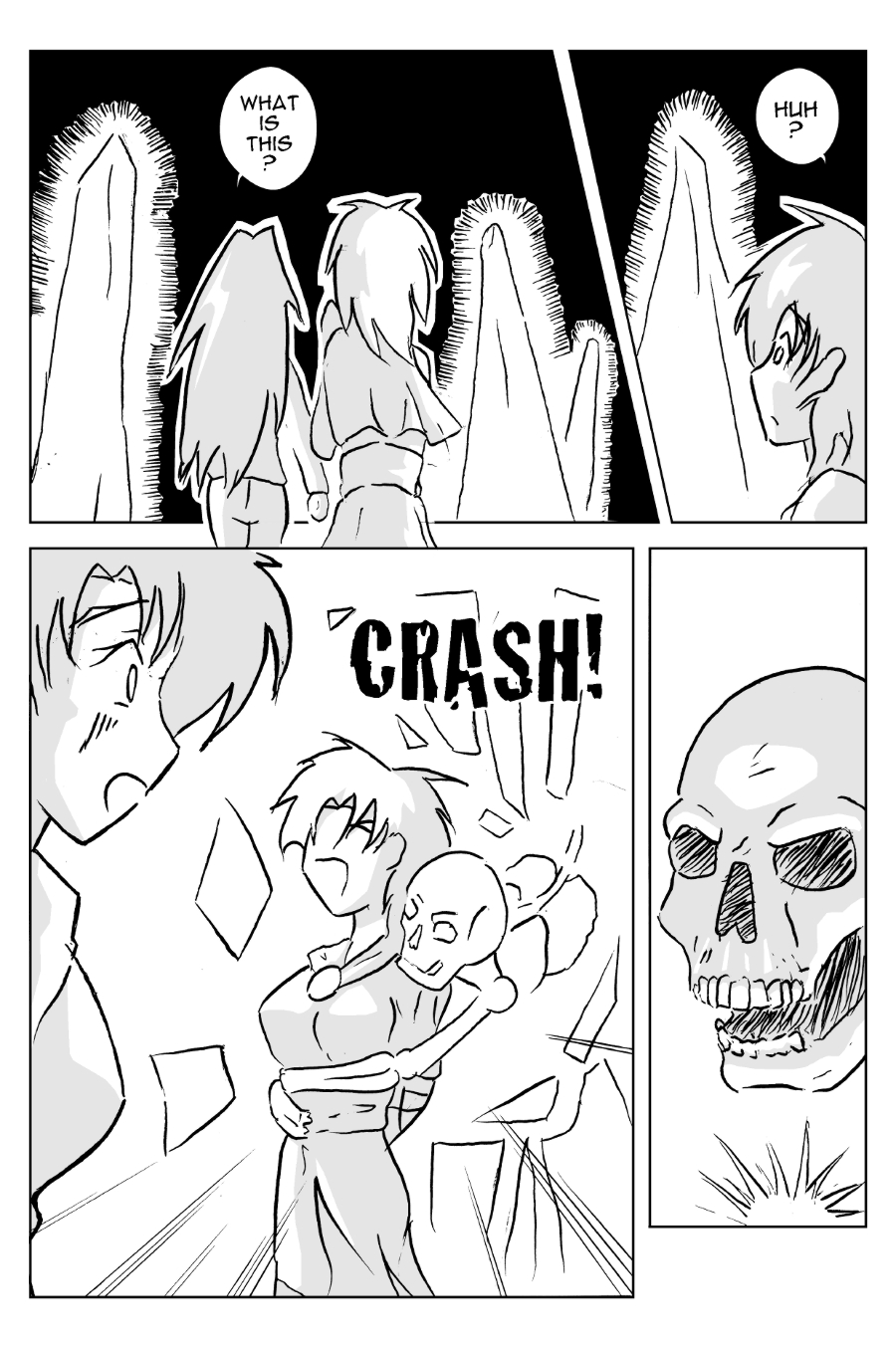NB! Japanese format. Reads RIGHT to LEFT
This is why they have those red divider ropes at museums. It’s not to protect the exhibit, it’s to stop stuff like this happening 🙂
Part 10: Manga Inking
Thanks to this course I have been able to address some of my bad habits. For the longest time since I started cartooning, I have had a knack of falling into bad habits. One bad habit is to stick with in-efficient methods after only trying trying the alternatives one or twice.
One bad ha bit I had was to use only line-art pens whenever I was inking pages. The best method for comic/manga inking is to use a specialist inking nib-pen and a pot of india/china ink. This method brings out a better ‘black’ effect in the final image, and also results in neater ends of the lines. However, I have always been a bit sloppy in this method, and after fleeting attempts I usually gave it up.
Instead I stuck with Faber Castell PITT artist pens, which are quite flexible. However like many line-art pens, the ink comes out sort of ‘greyish’ and is often rubbed away whenever I remove the pencil work. Regardless, I was stuck in my rut and stuck with my line-art pens.
Nao re-introduced me to the idea of proper inking in manga.
All of Hello Tomorrow has been done with an inking nib-pen. This is the reason why a lot of the work is sloppier than my previous stuff. This was down to me be so inexperienced in this kind of inking. So much so that I was actually terrified to ruin my otherwise alright page-work with my horrendous inking. You might also remember back to the ‘Ask Aoife’ section section, which was also inked poorly. Beyond the fun experiment of giving you direct access to Aoife, ‘Ask Aoife’ was also my attempt to prime my abilites to ink before I committed to inking my course manga.
It’s very clear that I still have a lot of practice ahead of me, but thanks to Nao I have started to practice inking again. All new work in Back Office, Bata Neart and other projects are now inked with a nib-pen.
Next time: Being kind to the Reader




Bad touch. BAD TOUCH! Man your tasers. 😛
Not sure if tasers will work on an un-dead skeleton-monster 😀
Yeah, dry bone is going to be a pretty terrible conductor.
True. And without organs I don’t think this possessed skeleton has much that can be injured.
Also, shock him now and you’ll just hurt Aine.
This is why I keep away from horror movies. They stay with me too long. They also make it right creepy to go into museums, caves and other places nature made that can be darn pretty.
Fine. Torches and sledgehammers, then. 😈
@Jen: Uh oh. I hope I haven’t scared you away from parks now 😀
@Azreal: That’ll work. But we both know that Ashling has access to *something* a lot more effective (/spoiler)
@Rawr: Nah, it’s all good. 🙂 As long as there aren’t a lot of skeletons lying around being creepy. Haha. If I was in Aine’s position… I’d either be terrified or go ape-shit and try to bash it into splinters because, EW, it’s touching me and it has no flesh and shouldn’t be alive! It’d be that kind of comical scene that mangas often have but that’s the truth of the matter. 🙂
NO ONE EXPECTS THE SPANISH INQUISITION!!
Someone call HR and slap a sexual harassment suite on that skeleton.
@Jen: Thinking about it, I should have gone that way here. Alas I needed Aine to be a little helpless here so that Ashling could try to rescue her (as you’ll find out in the coming pages). I might revisit this idea in the main-cannon Bata Neart 😀
@Farren: Ahh…by far one of my favourite Python skits.
One memory that always makes me smile comes from a house-party I was at many years ago in Dublin. Someone in the context of a normal conversation had said: ‘Jasus, I wasn’t expecting the Spanish Inquisition’
Suddenly, with 2 other nearby guys who I never met before, we 3 turned around in unison to this person and in dramic Python style blared out: NO ONE EXPECTS THE SPANISH INQUISTIION!!! It was one of those one-in-a-million moments. All it was missing was the dramatic music at the end.
For the longest while, I used a t-shirt with this logo on it. Long since worn through, I really need to get another 😀
That is an awesome shirt. One of these day’s I’ll dress up as the Spanish Inquisition for Halloween.
Or maybe the skeleton is just trying to be friendly.
“I’ve got you! Tickle, tickle, tickle.”